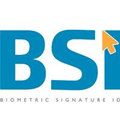Facebook Newest Portal for Social Media Identity Theft
Robert Siciliano Identity Theft Expert
Imagine trying to log into your online accounts one after the other and being locked out. At first you think the site you are visiting screwed up but then it keeps happening over and over again no matter where you go. Then you start receiving messages from friends and family asking you why you are behaving so freakishly online.
This is what happened to Matasha Allen as described in the Eastern Michigan Universitys Eastern Echo.
“Allen, 28, was a substitute teacher at the time, teaching music as well as elementary classes. Her only outlet to the Internet was limited to libraries and public computer labs, where she would check her accounts, look through e-mail and stay in touch with friends on Facebook. It was during one of these trips to the computers that it happened, Allen deduced. She thinks her Facebook account wasn’t completely logged off, or the computer didn’t log out. However it happened, someone found their way onto Allen’s accounts and took complete control.
“Social media is built on the honor system. There are no checks and balances to prove who is who. Anyone can pose as you and blog as you. This makes for social media identity theft,” said Robert Siciliano, a security consultant for Intelius.com and a speaker on preventing identity theft.
“The problem with social media identity theft is that when it takes over your account, all the people that you communicate with within your account may believe the identity thief is you. And when that identity thief begins to ask for money, from your friends and from your family and your coworkers, then they may actually pull money out of their pocket and send it via Western Union to the imposter. They think that you’ve actually come into the trouble that the identity thief is saying you’re in.”
In Allen’s case, her identity theft didn’t escalate to the thief asking for money from friends, but the thief was malicious. Messages were sent to friends and family, using profanity and insults. One of the incidents Allen related was toward an organization focusing on eliminating poverty in children. The identity thief sent the organization a message reading, “I hate children. I hope they all starve.””
- Steer clear of public computers whenever possible, or at least not accessing accounts or sites that require passwords.
- If you use a public PC get a USB drive that has a built in browser that allows you to surf securely
- No matter what PC you use to access accounts always log out when your are done
- Register your name at as many social media sites as possible. Use Knowem.com to do it for you.
Protect your identity. Get a credit freeze. Go to ConsumersUnion.org and follow the steps for your particular state. This is an absolutely necessary tool to secure your credit. In most cases, it prevents new accounts from being opened in your name. This makes your Social Security number useless to a potential identity thief.
Invest in Intelius identity theft protection and prevention. Not all forms of identity theft protection can be prevented, but identity theft protection services can dramatically reduce your risk. (Disclosures)
Robert Siciliano identity theft speaker discussing social media identity theft on on Fox Boston

























